Blog
A More Than Human Manifesto
Anab Jain and Jon Ardern were invited to develop a manifesto for the Dezeen 15 digital festival, bringing together fifteen creatives across various disciplines to propose ideas that can change the world over the next fifteen years.
Discussing the studio’s approach and methodology with Marcus Fairs, Anab and Jon presented A More Than Human Manifesto – which expands upon their desire for a shift towards a more-than-human politics, and the important role that mythology and storytelling hold as tools to navigate climate change.
The manifesto references our recent Superflux projects Refuge for Resurgence and Invocation for Hope to propose a larger shift in creative practices, making them less extractive, less destructive in favour of a vocabulary which is more supportive of our planet’s ecosystem. For example, moving from “Fixing” to “caring”, and “planning” becomes “gardening”.
The full manifesto can be read below:
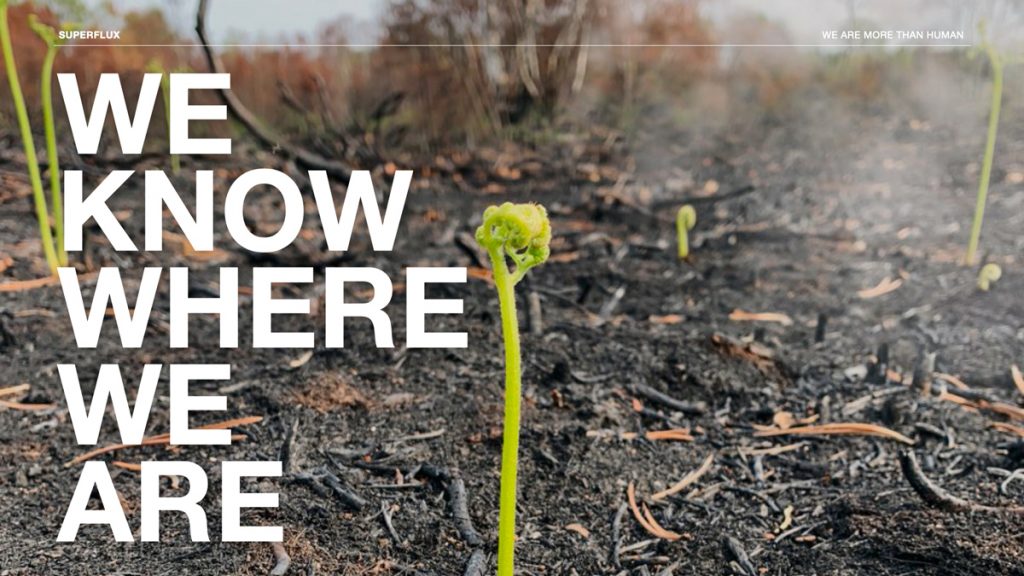
We are more than human. We know where we are.
Our actions have caused disastrous imbalances. The Earth’s climate system is in peril: animal populations destroyed, soil degraded. People alive today will witness the extinction of thousands, if not millions, of species.
But this isn’t just an abstract tragedy happening to other lifeforms. Our fates, it turns out, are more interwoven than our predecessors knew. Without our kin – butterflies, birds, bees, lichen – humanity can not survive on earth.
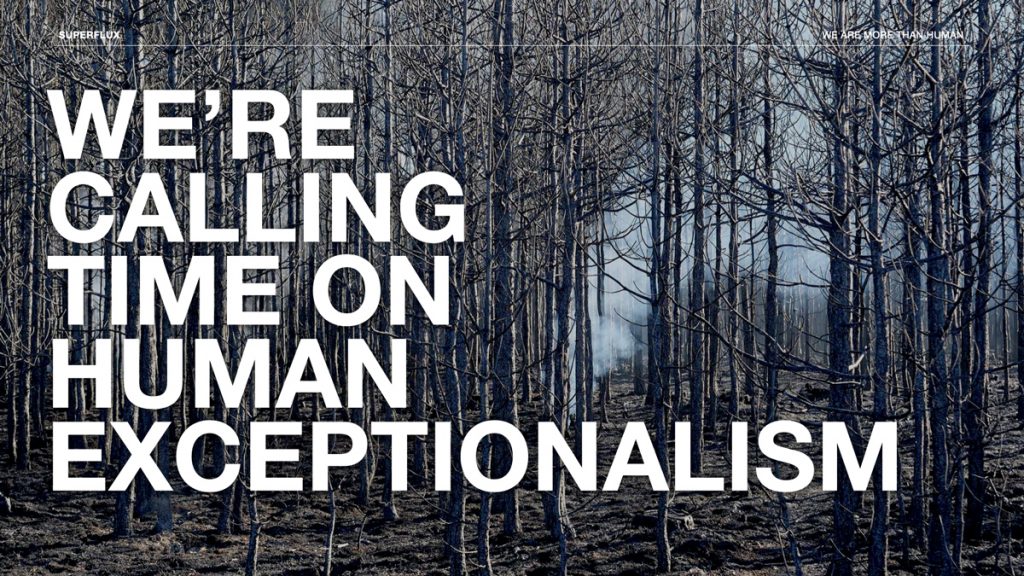
That’s why we’re calling time on human exceptionalism. It’s not working for the planet. It’s not working for humanity. We believe that humankind needs to think beyond itself.
We need to remember that we are not just on this Earth: we are of this Earth. The interdependence is real: humanity as ecology, ecology as humanity. Both the head and the heart demand this mental leap, this act of surrender.
The awe of small things helps: the morning bird song; the smell of rain; the winter sunset. We need to cultivate a reverence for the beauty and embodied intelligence of our ecosystem. We need to feel that its intelligence may be greater than ours.
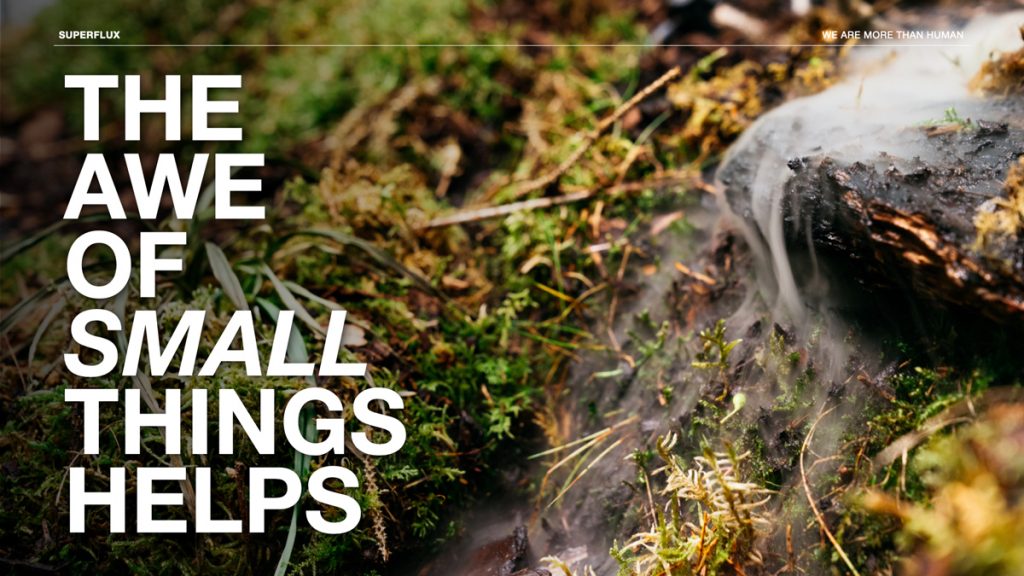
No more treating nature as a resource for extraction, exploitation and consumption. There is no nourishment here. Instead, we must foster mutual admiration and respect.
This more-than-human spirit will encourage us to forge new relationships with the species we share our planet with. Stripping an ecosystem for our “needs” must become as aberrant to us as cutting a piece of your flesh off to feed yourself.
Real change – more-than-human change – is possible.
For those schooled in a dichotomy between “humanity” and “nature”, we will need to change how we think. This will be hard. We will need a renewal of our beliefs, of what we value or think of as “good”. New taboos, too. We will rediscover old stories, stories that, though muted by the norms of an extractive capitalism, have never gone away.
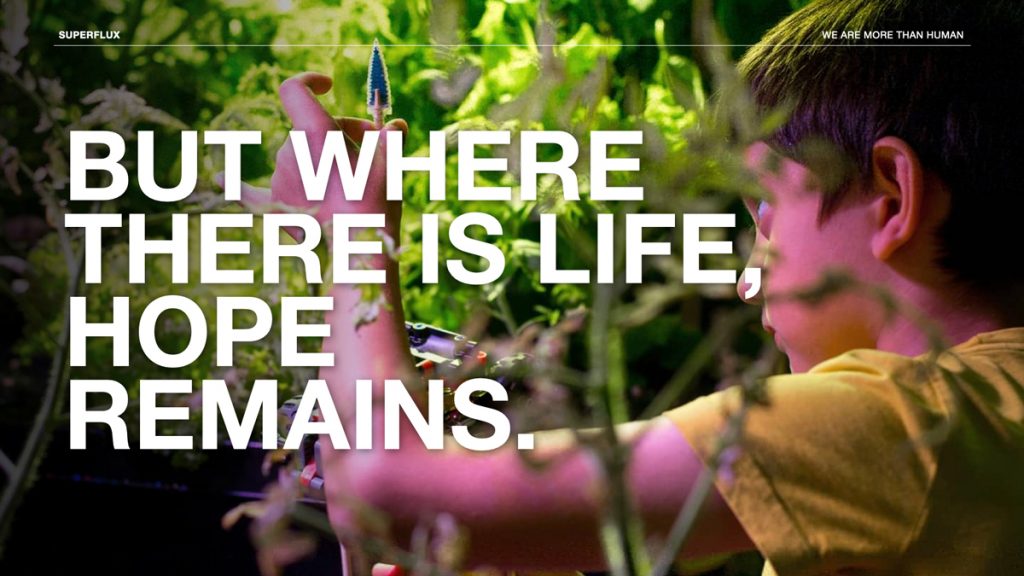
But where there is life, hope remains. We can pair incredible power with humility and care, foresight with stewardship. Real change – more-than-human change – is possible.
We need to move. Here’s how:
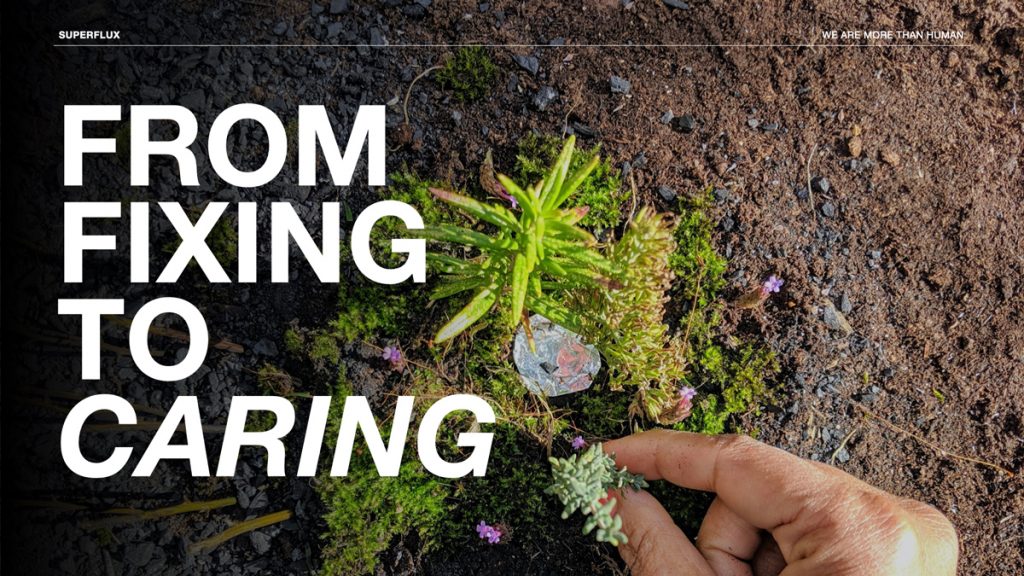
Move from fixing to caring
Let’s move away from the techno-deterministic pull of the language around “fixing”. When we foreground the idea of care, it inherently embodies ideas of fixing, building, making and everything necessary to take care of that particular thing, person, tree, insect, bird, animal, us, them, everyone.
Move from planning to gardening
Modernism’s most spectacular failures have happened when a belief in top-down planning crashes into the messy complexities of life. We should swap set squares for gardening gloves: we need to nurture and grow, adapt to rather than impose on.
Move from systems to assemblages, from knots to nodes
Acknowledging the entanglements without the desire to have the “full overview”, keeps us open to surprising possibilities. And it reflects the deeply entangled co-evolution of humans and non-humans – think wolves, men and dogs, or the soil as a living organism.
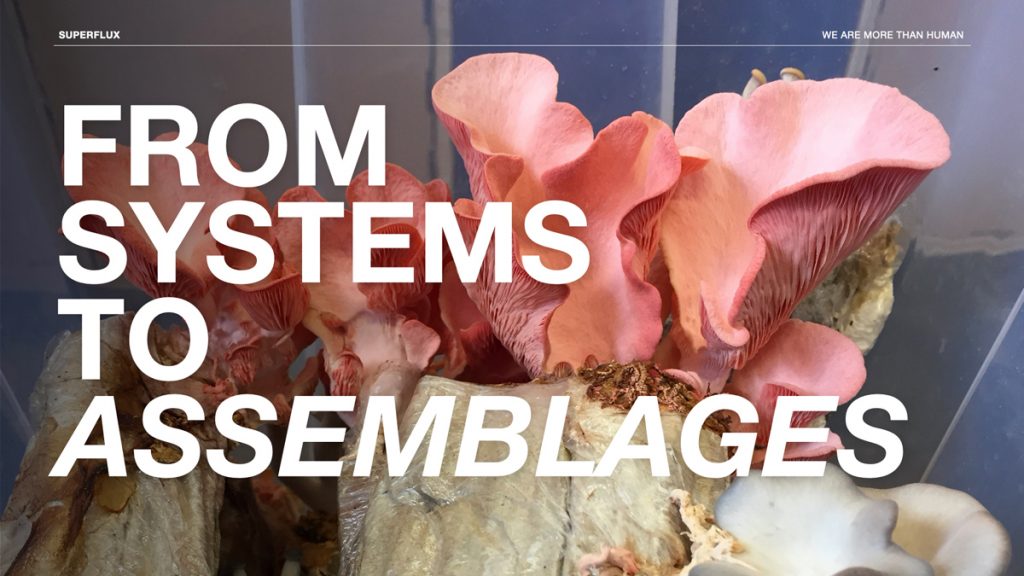
Move from innovation to resurgence
After a forest fire, seedlings sprout in the ashes, and, with time, another forest may grow up in the burn. The regrowing forest is an example of what we are calling resurgence. Whereas “innovation” fixates on the new and the different, resurgence forges assemblages of multispecies livability in the midst of disturbance.
Move from independence to interdependence
We value and celebrate independence, from the first steps a baby takes to the geopolitical decisions we make. What if, instead of independence, instead of constantly valuing individual success, we celebrate our interdependence with each other and all species?
Move from extinction to precarity
Rather than retreat from the anxiety of a singular, apocalyptic endpoint such as extinction, could we instead consider the possibility of precarious flourishing?
The Dezeen 15 digital festival ran from 1 to 19 November. To listen to conversations with the other artists and studios, click here. You can also read more about the featured projects on the Superflux website.